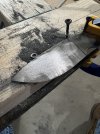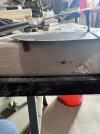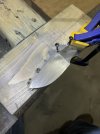JV Knives
Knifemaker / Craftsman / Service Provider
- Joined
- Jun 11, 2008
- Messages
- 1,407
First off, welcome to the game! Regarding "flat" bevels, it takes time and experience. I also know, you don't want to hear that...at least I didn't! You will soon find out through practice that the idea of the steel being flat and the platen being flat do not automatically mean a flat bevel  There are many ways to come off the flats in process. Even pressure, focusing on full flat contact with the abrasive, and keeping your eye on the bevel often are your best friends.
There are many ways to come off the flats in process. Even pressure, focusing on full flat contact with the abrasive, and keeping your eye on the bevel often are your best friends.
The encouraging part: I have seen many of these types of posts. You are off to a great start. I am certain that you will learn a LOT from choosing this file method to start and learn. It will make you a much better craftsman for when you dive in to a new grinder! I started on a 1x30, but wish I had started with just a filing jig. I think it is the best first method to see what is really going on.
The encouraging part: I have seen many of these types of posts. You are off to a great start. I am certain that you will learn a LOT from choosing this file method to start and learn. It will make you a much better craftsman for when you dive in to a new grinder! I started on a 1x30, but wish I had started with just a filing jig. I think it is the best first method to see what is really going on.




